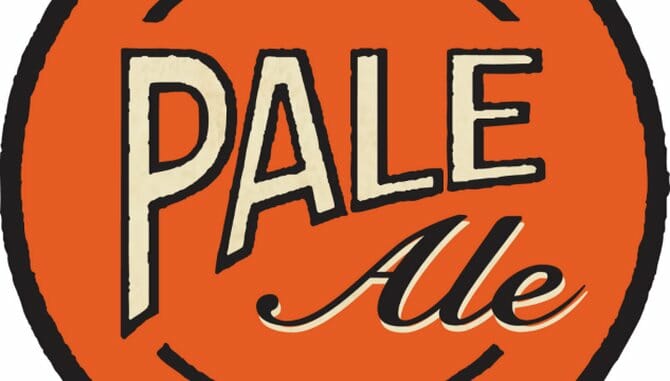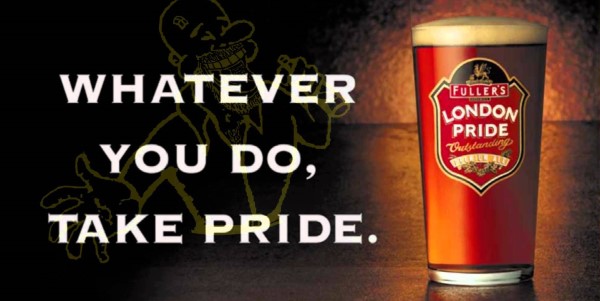
Paste’s monthly blind style tasting for February has been American pale ale, and in honor of the 83 pale ales we were able to gather, blind taste and rank, we’re launching a new monthly series dedicated to the idea of beer styles themselves. In this series, I’ll go trawling through the historical record to talk about the origins of popular beer styles both young and old, and then discuss that style’s current role in the American craft beer community, as I see it. First up: the noble style of “pale ale,” which has been among the world’s most popular and consumed craft beer styles for more than 300 years.
The Origin of Pale Ale
The creation of “pale ale” as a style is closely tied to the history of technological development in professional brewing in England. In short, it was impossible for someone to brew what we would think of as “pale ale” before roughly 1642, due to the way barley was malted.
1642 is the first recorded use of coke as a fuel for kilning malt, and the beginning of what is now referred to as modern “base malts.” Coke, a fossil fuel derived from coal, burns hot but with far less smoke and soot than the wood or peat previously used to heat barley for kilning. Using coke, maltsters could create new varieties of malted barley that were lighter in color and softer in flavor. Before this point, use of darker roasted malts imparted darker colors and more pronounced roast flavors in essentially all British beer. These beers would be rather odd by today’s standards, presumably with a profile somewhere between brown ale and rauchbier (because of the smoke).
This change, and the availability of lighter malts, is very significant to beer as a whole, even to dark beer styles as well. It was the first step toward modern grain bills—which is to say, beers made with a great majority of pale malt, and then smaller portions of “specialty” malts that are dialed in to achieve specific colors and malt profiles. Before this point, beers were likely to be made with a single malt variety. These standardized, lighter base malts eventually became the starting point of essentially all beer styles. Even in the grain bill for say, a stout, the majority is pale malt of some sort, with a smaller portion of intensely roasted malt (such as black patent malt or roasted barley) that gives the beer its dark color and roasted flavors. It’s a matter of economics as well, as pale malts are more efficient and yield the greatest amount of fermentable sugars per ounce.
These earliest pale ales likely bore little resemblance to the style we know today, though, particularly when it comes to hop rates. Still, they grew slowly hoppier and more bitter over time, as the British palate grew more accustomed to hop flavors and British farmers began cultivating their own hop harvests by the mid 1600s. By 1703, the term “pale ale” had appeared for the first time, and in 1710 the English parliament banned the use of non-hop bittering agents in beer. The era of the hop had officially arrived.
Still, it is a style where there is much historical argument and confusion. Here, I defer to beer historian Martyn Cornell, whose work in digging through old brewing journals and advertisements has revealed much about the history of British beer styles. I find his argument on pale ale vs. “bitter” particularly interesting, as he contends that the two styles were historically one and the same, only dividing into identifiably different styles in the modern craft beer era. Or in more detail:
From the moment that bitter beers started to become popular in Britain, around the beginning of the 1840s, “bitter beer” and “pale ale” were used by brewers and commentators as synonyms. There never was any difference between the two. Why did “pale ale” come to be appended as a name mostly to the bottled version of bitter? Because generally in the 19th century brewers called the drink in the brewery “pale ale”, and that’s the name they put on their bottle labels, but in the pub drinkers called this new drink “bitter”, to differentiate it from the older, sweeter, but still (then) pale mild ales.
Regardless, pale ale has remained popular in Britain ever since, varying in strength and flavor profiles over time, often driven by scarcity and shortages such as the world wars. It was imported to every end of the British empire, including the U.S.A., which is where we head next.
The Role of Pale Ale in American Craft Beer
For decades, pale ale was truly the backbone of the entire American craft beer industry. Like so many non-lager styles, it came to the country with British colonists, became popular, and then faded away into near-nothingness in the post-Prohibition era. But it was the style that began the revolution that has continued to gain strength in the last 35 years.
One might point to Anchor’s Liberty Ale, first brewed in 1975, as the first truly “American pale ale,” although it straddles a gap between APA and IPA. Indisputably the most important is of course Sierra Nevada Pale ale, which singlehandedly established most of the tropes of this genre, including the use of the first iconic American hop variety, Cascade. In the post-SNPA era, an American pale ale became defined as separate from English varieties: Typically lighter in malt presence, with less of that toffee-like maltiness and a greater focus on American hops and correspondingly higher bitterness. They became hop-driven beers that still prized drinkability and versatility in all situations, often featuring American hop varieties with citrusy or piney qualities in particular. For decades, that was the default definition of American pale ale, and hundreds of breweries created their own spin-offs of the SNPA formula.

The modern American pale ale, though, has changed. As in the category of American IPA, the definitions have broadened, and the flavors have become much more adventurous and varied, driven by the development of new aroma/flavor hop varieties throughout the 2000s and beyond. If you’ve been drinking beer through this period, you’ve seen numerous hop varietals come into vogue, one right after the other. Centennial. Amarillo. Simcoe. Citra. Galaxy. Mosaic. And so on. They’ve all helped broaden pale ale’s palette of flavors, resulting in modern examples that could be intensely tropical, herbal, resinous or even malt-driven. Just because you see “pale ale” on a label, you know longer know exactly what one will taste like.
Despite that evolution, though, and despite its historic importance, American pale ale has become something of an afterthought to American craft beer, at least in comparison with its previous prominence. After leading the way for so long, pale ale was finally passed in sales by IPA in 2011, and the gap has only increased since then. It’s a reflection of changing tastes in modern craft beer; less of a desire for balanced hoppy beer and more interest in over-the-top hoppy flavor, especially in a hop-bursted age where extreme bitterness has given way to huge late additions of hops. There’s a sort of tacit understanding when it comes to pale ale—“It’ll always be there if I want it, but I need to try this new IPA/DIPA first.”
This line of thinking was also presumably the one that gave birth to session IPA as a style, which has significantly eaten into the market share that once belonged to pale ale, as breweries realize that anything with “IPA” on the label will sell. If you need proof of that, look no further than the 2015 Great American Beer Fest, where the number of session IPAs in the competition surpassed the number of American pale ales in the very first year of session IPA being eligible. It all adds up to an American craft beer landscape where pale ale has receded in importance and volume, while still being a fondly regarded style. You can call it unfortunate, or you can call it simply part of the evolution of the beer landscape.
Still, it’s not like American pale ale is about to disappear, even if it’s no longer the poster child of the craft brewing movement. As long as there are corner brewpubs, pale ale will always have its place—a hop-lover’s ale, but also one of moderation and subtleties.
Three Essential Pale Ales You Need to Try
Fuller’s London Pride: In terms of immediately accessible examples of English-style pale ale, you’re going to have a hard time beating Fuller’s. A pint of cellar-temperature Fuller’s, manufactured since the 1950s, will give you a good idea of how classic English pales differ from their American cousins. On the nose, you get a bit of estery fruitiness from the more expressive British ale yeast, and a pronounced, sweet, biscuity maltiness. On the palate, toasted malt and toffee interplays with herbal, floral and spicy English hops, all in a delicate balance. This is a beer meant to be enjoyed in quantity, but one that continues to reveal new little subtleties each and every time you return to the pub for another pint.

Sierra Nevada Pale Ale: You know it; you may love it; you probably at least have fond memories of it. Sierra Nevada Pale ale is the indispensable, iconic American pale ale, and until you’ve had one, then you can hardly say you understand what American pale ale is all about. I can’t think of a single other beer that looms so largely and prominently in the history of its own style as SNPA does in pale ale. It’s the beer that made, floral, grapefruity Cascade hops famous, which inadvertently makes it a beer that helped drive the growth of the American hop industry itself. It was the first “hoppy beer” encountered by an entire generation of early craft beer adopters, many of whom turned to homebrewing as they created SNPA clones of their own at home. And it still holds up as a solid American pale ale today. Will it set the world on fire for a palate that has become accustomed to modern beer flavors? Probably not. But people aren’t only drinking it in 2016 out of nostalgia.
Boneyard Beer Co. Bone-A-Fide Pale Ale: I’ve given you classic English pale ale and classic American pale ale—now let’s talk modern American pale ale. This beautiful beer from Boneyard, winner of our recent blind tasting of 83 pale ales, is a great expression of where this style has gone in the 36 years since the advent of Sierra Nevada. Featuring massive tropical fruit, citrus and floral aromatics and flavors, it sets the senses ablaze while also still reminding you that pale ale is meant to be a refreshing, quaffable beer style. It simultaneously ups the volume of flavor that one expects from the style and presents those flavors in such a structured, professional way that they never seem random or wanton. It carries on the traditions of pale ale drinkability while forging ahead in terms of what kind of flavors a pale ale is allowed to present.
There you have it—pale ale, in all its classical glory. We’ll continue doing this feature once a month, giving you an in-depth historical and modern primer on what beer styles have been, and what they will continue to be in our ever-evolving craft beer community.
Jim Vorel is Paste’s news editor. He’s looking forward to writing these entries about modern styles such as black IPA. You can follow him on Twitter.